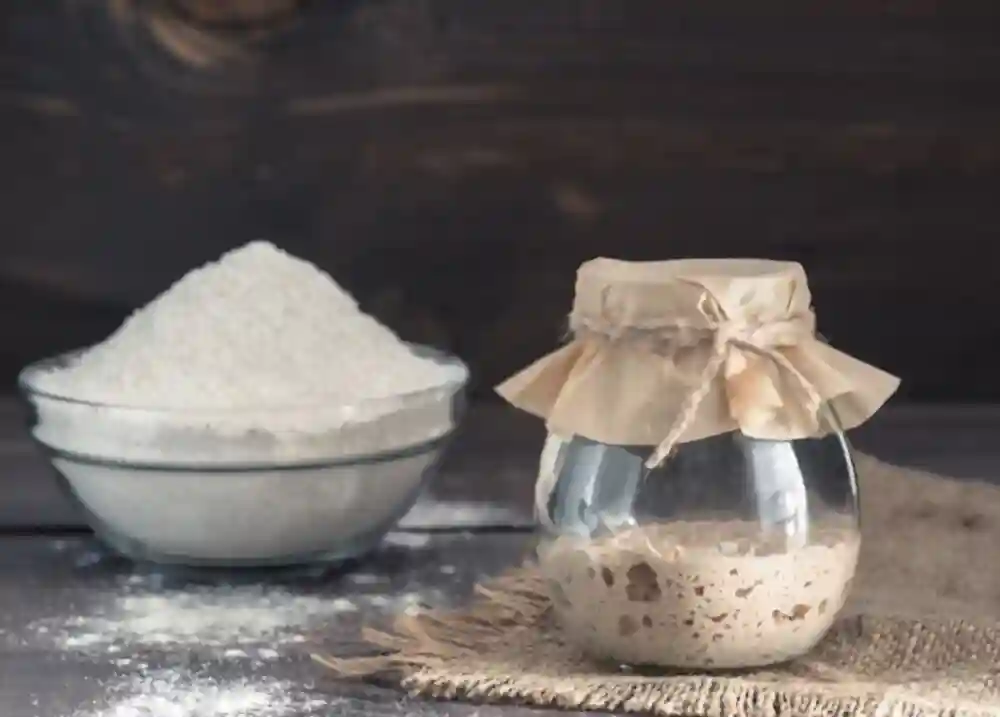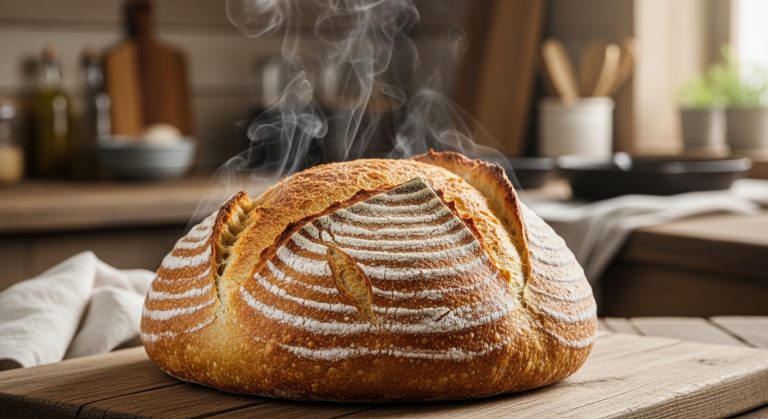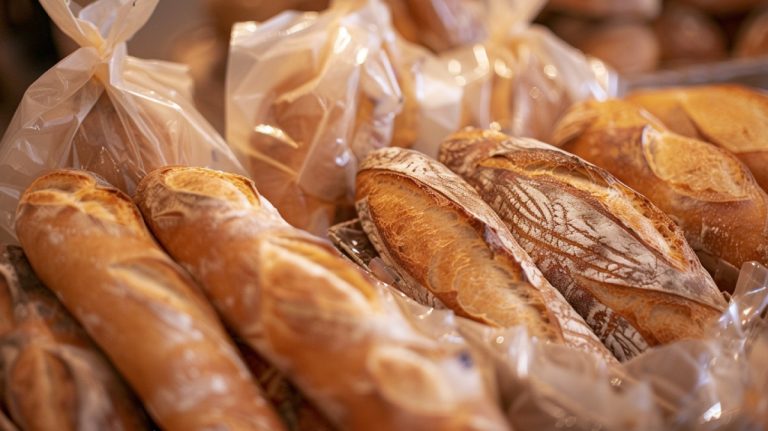What is Fed vs Unfed Sourdough Starter: Identifying and Choosing the Best Method Based on Your Recipe
Are you looking to explore the differences between fed and unfed sourdough starters? Doing so can help you determine which starter is best for your recipe.
Fed starters are living cultures made up of a combination of water and flour, while unfed starters only require water and flour with no added ingredients or yeast. When selecting the right starter for your bread-making needs, there is no simple ‘pick-and-choose’ solution.
It all depends on what kind of bread you’d like to bake, your level of experience, and how much time you have available to care for your starter. For novice bakers looking for an easy option, an unfed starter might be the ideal choice since it doesn’t require as much maintenance as a fed starter.
More experienced bakers might opt for a fed starter for its complex flavor and texture from regular feeding cycles. Still uncertain about which type will work best for you?
Why not experiment with both options? Understanding what is fed vs unfed sourdough starters can help you decide which works best with your recipe.
Sourdough Starter
Sourdough is a classic baking staple enjoyed by both culinary experts and home bakers alike, and the key ingredient to any great sourdough recipe is the starter. A starter is a mixture of flour and water that has been fermented with wild yeast and beneficial bacteria, which will help to give your bread its signature flavor.

Creating a starter is the foundation of any great loaf of bread, and having the right jar of wild yeast will make all the difference. It may seem simple, but a good starter is remarkably powerful and can be made within seven days with a simple schedule of steps.
Once you have established your starter, anything you decide to bake is sure to be tasty. You can even experiment with different types of flours for unique, artisanal flavors and textures.
Rest assured; there’s no one “right” way when it comes to implementing a sourdough starter, so don’t worry if it ends up being different from what you’ve seen elsewhere, just trust the process and enjoy all that delicious bread.
There are two primary methods for creating a starter: Fed and unfed.
Fed Starter
The fed “active” or “mature” method involves regularly adding small amounts of fresh flour and water to the starter every 12 to 24 hours. This will help support the growth of wild yeast and beneficial bacteria, which in turn will create a more active dough that will rise faster during baking.
A fed sourdough starter is an important component of many recipes, from classic artisan pieces of bread to rich pastries. It is considered the “mother” of all types of sourdough starters.
This process allows for more consistent performance, as well as a better rise and texture in baked goods. Also, because of its regular feeding schedule, a fed starter can be stored in the refrigerator for up to two weeks without any problems.
Unfed Starter
Unfed sourdough starters are what you think is right; they are not fed and are not given the same amount of attention. The unfed “refrigerator” or “mother” method is when the starter is simply kept in the fridge and given no additional flour or water regularly, instead relying solely on the wild yeast for fermentation and taking much longer to become active.
This method involves creating a starter with only flour and water, allowing it to sit at room temperature for several days until it becomes active and bubbly. This is a slower process but can create a more complex flavor in the dough, as it allows for natural fermentation to take place.
Unlike fed starters, unfed starters don’t pass the float test, which lets you know if your starter is ready, but they still have plenty of amazing uses in baking. They are ideal for recipes that require longer fermentation times or prefer a milder sourdough flavor, such as crepes, pancakes, and flatbreads.
They can also make bread with a long rise time, like focaccia, ciabatta, and rustic sourdough loaves.
Both fed and unfed sourdough starters can produce delicious bread that will satisfy your taste buds. Understanding what each method entails will help you decide which option is best for you.
How Does a Fed Sourdough Starter Work?
A fed sourdough starter creates a living culture of wild yeast and lactic acid bacteria, which breaks down the complex starches in flour into simpler sugars. This process produces carbon dioxide gas which causes doughs to rise, creating a lighter, more airy texture.
The acidic environment also helps develop flavor and extends the shelf life of bread. And the lactic acid bacteria helps to preserve the bread and makes them less susceptible to mold growth.
Ingredients Needed to Create Fed Sourdough Starter
The two main ingredients needed to create a fed sourdough starter are flour and water. Unbleached flour is always best since bleach can kill the yeast necessary for fermentation.
And city tap water has been treated to prevent organisms like yeast from growing, so if you have access to well water it’s best to try that instead. When using your water source, keep in mind that temperature does play an important role in successful starters as well; for best results, aim for lukewarm or room temperature.
Flour is used because it naturally contains wild yeast and other microorganisms, which will begin the fermentation process when combined with the right temperature. Lukewarm water activates those microorganisms in the flour, allowing them to multiply and produce carbon dioxide gas which causes the dough to rise.
The ratio of flour to water should be approximately 1:1, depending on the type of flour used. In a bowl or jar, combine equal parts flour and water, stirring until thick paste forms.
Cover the mixture with a lid and let it sit at room temperature for 48 hours until it begins to bubble. After this time has passed, you can begin to feed your starter.
How To Feed The Starter?
Once created, fed sourdough starters need regular “feedings” for them to remain active and viable. This involves removing some of the existing starter (leaving about one-third behind) and replacing it with equal parts fresh flour and water every 12 hours for 3-4 days until the starter becomes active.
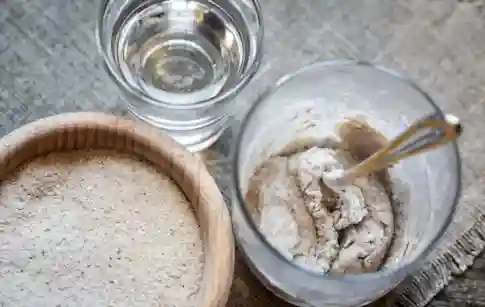
It’s important not to over-feed your starter, or else it may become too acidic due to an overabundance of lactic acid bacteria from the feedings. It’s best practice to discard some starter each time you feed it in order to prevent this from happening.
Starter Maintenance
Taking care of a starter can seem like a lot if you aren’t used to it, but some simple weekly maintenance can go a long way. If you aren’t able to use your starter very often, it’s best to store it in the refrigerator.
Just be sure to feed it each week and keep an eye on it; you want it to be in prime shape when you use it. As long as you feed it every week, you’ll have plenty of healthy starters available for baking purposes whenever needed.
It’s recommended to give your refrigerated starter one feeding and let it rise before you use it; that way, you get maximum poof. Just take the starter out of your refrigerator the night before baking and discard any yellowish liquid that has accumulated in the jar.
Mix ¼ cup of starter into 8-10 oz of prepared starter food and store the remaining starter in another jar in the fridge. Next, pour this new batch into a clean jar and leave it on your kitchen countertop overnight to recover.
Finally, when ready to bake again, prepare 8 oz of starter food with ¼ cup of the starter before placing in a fresh jar and leaving it resting on the countertop before refrigerating once more. This method is an easy way to keep your sourdough starter alive without having to feed it on a daily basis constantly.
Finding the Best Method for Your Recipe by Identifying and Discovering the Differences
Feeding Cycles
Feeding cycles are the process of adding flour and water to a sourdough starter, stirring it up, and waiting for it to become active again. This process is often repeated several times before the starter is ready to be used in a recipe.

An unfed sourdough starter is essentially dormant and will remain so until it is fed. The feeding process increases the number of wild yeast cells present in the mixture, which allows them to feed on the sugars present in flour and water, producing carbon dioxide and alcohol as by-products.
This process causes the dough to rise when baked, creating delicious bread with an open crumb structure.
Color and Odor Variations
The most obvious differences between fed and unfed starters will be seen in their color and odor variations. An unfed sourdough starter will appear yellowish or beige in color with no visible bubbles or foam formations.
Its odor can range from slightly acidic to earthy with a hint of sweetness depending on how long its been left unfed. On the other hand, a fed sourdough starter should have a much livelier appearance, with bubbles rising from its surface and off-white/tan foam at its top.
Its smell should also be more pronounced due to the production of volatile compounds released during fermentation, such as lactic acid and acetic acid.
Rise Time & Fall Time During Feedings
Generally, fed starters tend to have shorter rise times than unfed starters when added to recipes. Because they already contain active yeast cells that can quickly turn sugar into carbon dioxide gas which helps leaven doughs faster than an unfed starter.
Fed starters can also be used right away once fed, while an unfed one needs additional time to ferment and become active again before use. On the other hand, unfed starters tend to have a longer fall time (the amount of time it takes for doughs to return back to their original size). This means that doughs made with an unfed starter will have more time to develop flavor and structure without over-proofing.
Float Test
The float test is a simple method of determining whether your sourdough starter is fed or unfed. To do the test, place a teaspoon of your starter in a glass of water and observe what happens – if it floats, then it is likely that the starter has been fed recently; if it sinks to the bottom, then it’s an unfed starter.
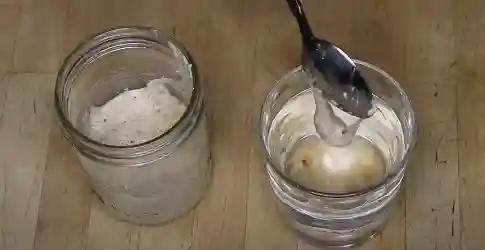
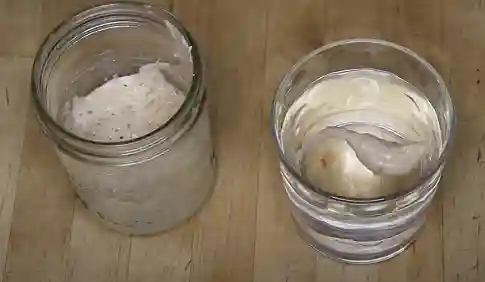
The float test will also give you an indication of the strength of your starter; if it floats almost immediately, then it is likely to be very active and can be used for baking right away. If it takes a few minutes before floating, then the starter might need additional feedings before use.
This test can be done multiple times on the same starter, as it should give you consistent results. If the results change from one test to another, then your starter may need to be fed more regularly or discarded and replaced altogether.
Testing pH Level
Comparing different types of sourdough starters requires pH testing. This is because each sourdough starter has a distinct pH level indicating its overall activity level, influencing how fast it ferments.
Something that’s particularly useful for bakers who want more control over their baking results through precise measurements/readings instead of relying purely on trial & error methods alone. Generally speaking, an unfed starter will produce an average reading somewhere around 5, while a typical reading from an active one should fall somewhere between 4-6.
Readings higher than this may indicate potential issues such as contamination by other organisms.
The Activity & Recipe Compatibility
It is important to note that both fed and unfed starters can be used in recipes. However, they will behave differently regarding rise time, fall time, flavor intensity, strength, and overall baking performance.
For example, an unfed starter may take much longer to rise than a fed one but have a more intense flavor due to the increased fermentation activity. Alternatively, a fed starter could help baked goods rise faster but have less flavor intensity than an unfed one.
A fed starter is an ideal choice for any recipe calling for a rising agent, like in most bread recipes. The fermentation process breaks down the proteins and starches within the flour; this produces carbon dioxide gas which causes the dough to rise.
Adding an unfed starter will not activate this process because it lacks the strength to do so.
When deciding between fed or unfed starters, the main thing to consider is your recipe. If you’re making lean dough like a baguette or ciabatta, an unfed starter will give you the best results. On the other hand, if you’ll be baking a heavier dough like sourdough bread or rye bread that needs more rising power and flavor complexity, then it’s better to go with a fed starter.
Uses of Fed Starters
The type of sourdough starter that you choose should depend on the type of recipe and desired results rather than just blindly following a particular preference. Understanding the differences between each type of starter can help bakers make the right choice and get the consistent results they’re looking for.
Using fed sourdough starters allows recipes like artisan bread or pizza doughs that don’t require added yeast for leavening purposes. Because these types of recipes rely solely on their own natural fermentation process using wild yeast found in fermented starters they have distinct flavors, unlike any recipe that uses commercial yeasts.
Additionally, many users note that they experience improved digestion after consuming products made with ferment starters due to their high levels of probiotics produced during the fermentation process, which aid in digestion.
Uses of Unfed Starters
Unfed starters are great for recipes where you want a slow fermenting process, such as crackers, flatbreads, and pizza crusts that require longer rising times but don’t need too much structure from the dough itself. Since these starters haven’t been fed recently, they won’t produce enough carbon dioxide gas to create a significant lift in the dough, a necessary component for traditional bread.
However, they will still provide flavor from their natural lactic acid bacteria cultures, which develop over time without feeding. And, due to its low activity level, an unfed starter can be stored in the fridge without needing to be refreshed before use.
Using an unfed sourdough starter adds a unique flavor element that cannot be replicated with commercially available options or even other varieties of homemade starters. Some recipes which require unfed starters include pizza doughs like Neapolitan Pizza Dough or Sicilian Focaccia Bread Dough; sourdough biscuit recipes like Buttermilk Sourdough Biscuits; sweet treats like Chocolate Chip Sourdough Pancakes.
And breakfast favorites like Hot Cross Buns are made with oat milk and brown sugar instead of traditional ingredients like eggs or dairy products.
Is It Possible to Use Just a Fed Starter?
Yes, you can use a starter that was just fed. However, it’s best to give it time to ferment and develop flavor first. The fermentation process takes time, so if you plan to use the starter right away you may want to feed it more often or start with a larger quantity of ingredients.
This will speed up the fermentation process and ensure that your starter is sufficiently active when you need it. Also, it’s important to be mindful of temperature when you’re preparing your starter and giving it a chance to ferment, as different temperatures will affect how quickly your starter reaches maturity.
Keeping track of the temperature while your starter matures is essential to get the most out of your starter’s flavor and texture profiles.
How does It Affect the Starter If You don’t Discard It?
If you don’t discard your starter, the bacteria, and yeast will continue to grow and feed off the flour’s sugars. This can lead to an overactive starter which will produce a lot of gas, resulting in an overly sour-tasting dough that won’t rise very well.
Not discarding the starter also means that your dough may not have enough fresh yeast since the old culture could contain too little or be inactive. And, not discarding your starter can create off-flavors in your dough as the bacteria break down their food source, leaving behind compounds like lactic acid and other acids which can affect flavor.
Finally, not discarding your starter can lead to an unbalanced pH in your dough which can cause the dough to be overly sticky and difficult to handle.
Therefore, it’s important to discard some of your unfed starters each time you feed it to maintain a healthy balance between the yeast, bacteria, and other microorganisms present in your starter.
Do Unfed Starters Count as Discards?
Yes, unfed starters and discard are the same thing. Discard is an informal term for unfed starter, a type of yeast-fermented dough that is not fed with any additional sugar or flour after its initial fermentation.
An unfed starter is typically made by mixing together equal parts by the weight of water and flour, then allowing it to rest at room temperature until it has developed a sour odor. The unfed starter can be used directly in recipes to give baked goods a tangy flavor or can be “fed” additional amounts of flour and water regularly to keep it alive.
Because discard is an unfed starter that has been left out for too long, it may not have as much of an active microbial population as a freshly made one, but it still should provide some flavor benefits in recipes requiring yeast.
The discard can also be used in baking recipes such as pancakes, waffles, or muffins. It should be noted, however, that if you plan on baking with your discard, you should use a pre-discarded starter (i.e., a starter that has been fed within the past 12 hours).
Unfed discard can also be frozen in small portions for future use and given away to friends who want to start their own sourdough journey.
Can You Over Feed a Sourdough Starter?
Yes, it is possible to overfeed a sourdough starter. When you feed it too much flour and water, the population of microorganisms in the starter increases rapidly, which can cause the dough to become overly acidic, dense, and gummy.
This can lead to a higher risk of contamination since the starter’s pH level will drop below 4.5. Also, overfeeding can create an imbalance in the starter’s ecosystem, potentially resulting in off-flavors or poor performance in future bakes.
It is important to maintain regular feeding times and stick to your recipe’s instructions to avoid any issues with your sourdough starter.
How to Correct Overfed Sourdough Starter?
If a baker adds too much flour or water to their starter, it can become overfed and need correction. To correct an overfed starter, some of the excess flour and water should be removed from the mix and discarded.
It is also important to feed your starter regularly (every 12–24 hours) with fresh flour and water to maintain its desired consistency and ensure that it doesn’t become overfed again in the future. And, if you want to store your sourdough starter for longer periods of time, you should dehydrate it slightly so that there is no excess moisture that could cause it to go bad more quickly.
To do this, after feeding your sourdough starter, reduces its hydration level by adding a bit more dry ingredients than usual into your mix until you reach the desired consistency. Once finished, you can keep your dehydrated sourdough starter in an airtight container in either a fridge or freezer until you’re ready to use it again.
Explore the Delicious Possibilities of Sourdough Starters
Making a sourdough starter from scratch requires patience and practice, but the results are worth it. Whether using a fed or unfed starter, mastering the art of working with sourdough will give you an edge in creating delicious baked goods.
Fed and unfed sourdough starters both have their own unique properties that can make them more suitable for certain recipes. With practice, bakers can learn how to get the perfect balance of flavor and texture in their recipes using either type of starter.
So get creative and explore the delicious possibilities a sourdough starter can bring to your kitchen.

